In the competitive market, your product needs to leave a lasting impact on the users, to ensure its success. The impact begins right from the first interaction. All these points out to only one thing— user experience.
A good and desirable user experience has certain criteria. The first one among those is ‘staying on the same page as your users’. The user experience should be designed completely based on your users’ likes and dislikes. If they don’t find your design relevant, they simply leave, especially with a number of alternatives around.
How to ensure that you are creating user-centered designs?
Research is the answer. User Experience research, also known as design research is the study of user requirements to add contexts and insights into the design process. This data from this research is used to tweak the design, leading to a better user experience. When your design decisions are based on actual research data, it’s evident that you are creating user-centric products.
So, in building products with amazing design and user experience, UX research is crucial. To help you get strong with this crucial part of the design process, here are a few ux books for beginners and professionals.
All these books make you a better UX researcher, helping you create designs that people love. Are you eager to see what’s on our list? Let’s begin.
#1-Just Enough Research
Just Enough Research, written by Erica Hall, is a great book if you are a beginner to user experience research. It’s a compact hands-on guide, a quick read and a good option to get started with research.
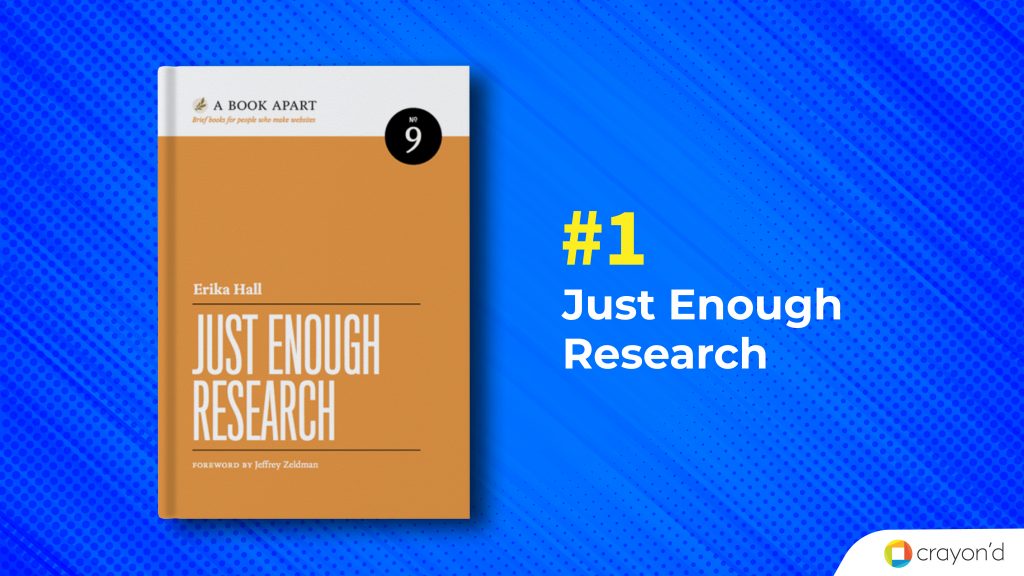
It begins with introducing and explaining the basics of the research process and emphasizes the importance of conducting it. Here’s how she describes research,
“In design, you’re solving for user needs and business goals. In research, you’re solving for a lack of information.”
Erica Hall suggests ways to introduce usability research practices into companies where it isn’t a part of the product design process. She also mentions other useful resources for designers to get advances with the research process.
The book goes on further explaining various types of research like user research, competitive research, and evaluative research. The author presents a lot of real-world examples and scenarios. What makes the book even more interesting is the humor element in Erica’s writing.
It doesn’t stop with the conducting but also explains the data analysis part. Erica adds tips and techniques to conduct research without big budgets. Assumptions are the enemies of good research. She emphasizes this here by saying,
“Your desire to find out needs to be stronger than your desire to predict. Otherwise, you’ll be a mess of confirmation bias, looking for answers that confirm what you already assume”
The book is a useful read for anyone whose job demands them to indulge in researching users— stakeholders, designers, and product managers.
#2-Think like a UX researcher: How to Observe Users, Influence Design, and Shape Business Strategy
Think like a UX researcher, published in 2019, is written by David Travis and Philip Hodgson. It is a book that brings you fresh perspectives to the existing ideas and pushes you to evaluate your methods of UX research. It speaks about the major misconceptions and giving clarifications for the same. It’s packed with research-backed information on UX.
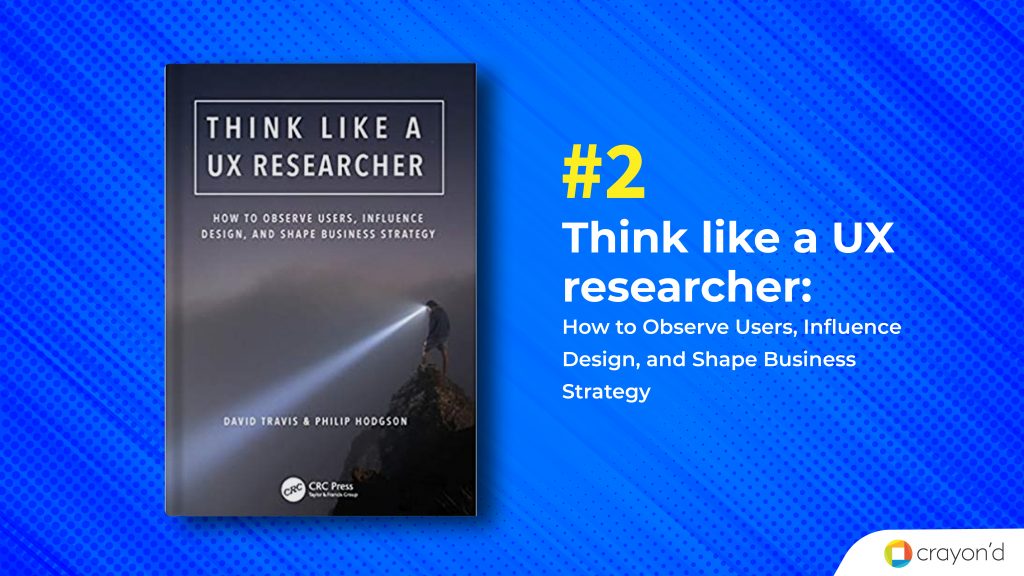
Right from planning the research to analyzing the data, the book covers it all. The book doesn’t just educate you with the tips but also guides you in applying them effectively. And as a part of that, there’s a mention of best practices to be followed in each of those steps. Every chapter ends with a question that puts you to test yourself about the things you have read in the chapter.
Another main thing this book addresses is the difference between user research and UX research. The authors say,
“User research implies a focus on users only; in contrast, UX research encourages practitioners and stakeholders to take a more strategic view and focus on what really matters: the user’s experience.”
Giving justice to the title, the authors have added details and strategies for UX researchers that help them build a career path. The chapters are standalone and completely make sense even when you read them in fragments. The book is a typical ‘pick up and read anytime anywhere’ kind.
This book is a great choice in spite of the level of your expertise— anyway it puts you a step ahead in your UX career.
#3-Interviewing Users: Uncover Compelling Insights
A crucial part of the research is the interview. If you think anyone can ace at conducting interviews, you are wrong. Interviews are a complicated part of UX research. To be able to gain valuable revelation about the users, you need to be prepared in the right way. This book is written by Steve Portigal.
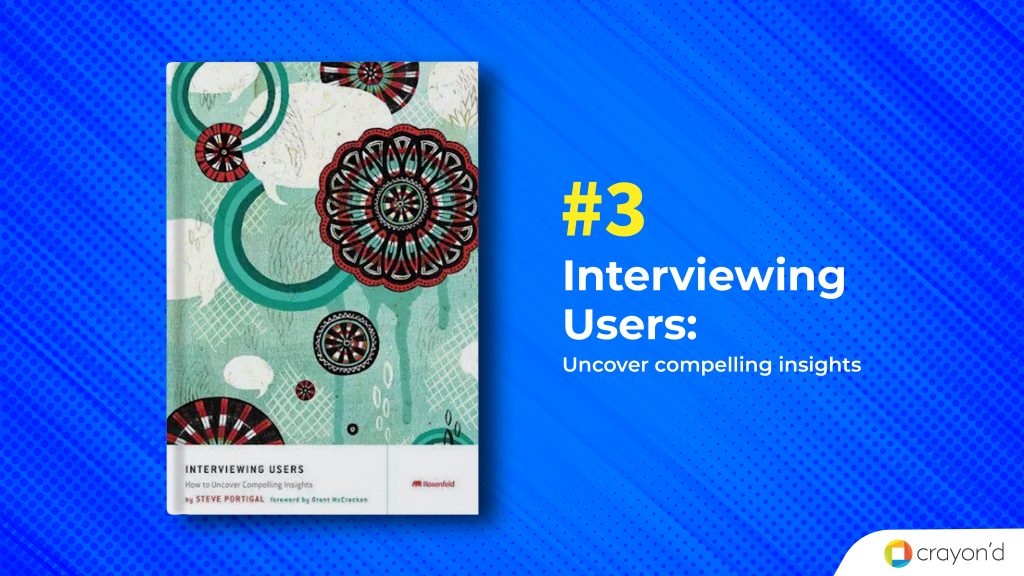
The book helps you with everything that has to do with interviews— preparation, questions and how to ask them, and many more. Questions, the author considers the crucial part of the interviews and adds tips on framing the same.
“There’s a difference between what you want to know and what you ask.”
The author begins by stating the importance of interviews in design, explaining issues that arise out of poor preparation or rapport between the interviewer and users. By stating the pitfalls that will occur in the interview process, he helps people to conduct interviews mindful of the mistakes. He adds tips and techniques for the entire process, here’s an example,
“Stories are where the richest insights lie, and your objective is to get to this point in every interview.”
The book is filled with examples along with funny real-life experiences of the author. It is a practical guide, providing you with a framework for interviews. The book is a great resource for beginners and in the case of experienced ones, it’s a good refresher.
#4-Universal Methods of Design: 100 Ways to Research Complex Problems, Develop Innovative Ideas, and Design Effective Solutions
The book, as its name suggests comprises 100 methods of design research, is written by Bella Martin and Bruce Hammington.
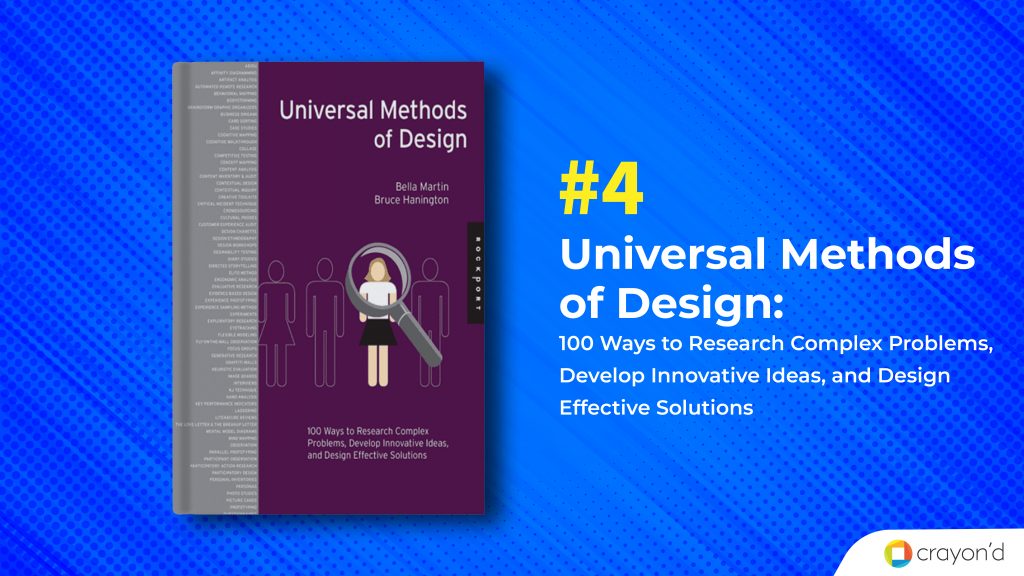
The research methods are arranged in alphabetical order, making them easy to refer to. The methods are classified into different categories, like
- Behavioral/attitudinal
- Quantitative/qualitative
- Innovative/adapted/traditional
- Exploratory/generative/evaluative
- Participatory/observational/self-reporting/expert review/design process
Each method is given a short description, followed by visual content along with its history and an example. There are illustrated case studies, that compensate for the briefness of the method explanation. The techniques are not described in-depth, however, the authors provide references in case the readers wish to explore.
There’s also an explanation of how the methods have evolved over time. It also adds information about how each method fits inside the overall design process.
With 100 methods in place, it’s easy for readers to get confused. But the authors cleverly state the methods similar to the one that’s explained. This brings clarity and effectiveness to the conveying. The book is like a dictionary, which every designer/researcher should have on their shelf.
This acts as a perfect reference for the research teams. Even though it’s not suitable for beginners, they can always use this book to get aware of the multiple techniques.
#5-UX for Lean Startup: Faster, Smarter User Experience Research and Design
UX for Lean startups is a book written for entrepreneurs and non-designers or anyone who has a product idea and wants to validate it. But designers can also read the book to get insights on user-centered design practices. It provides tips as to how startup founders can develop effective UX without spending much on it. The book is penned by Laura Klein.
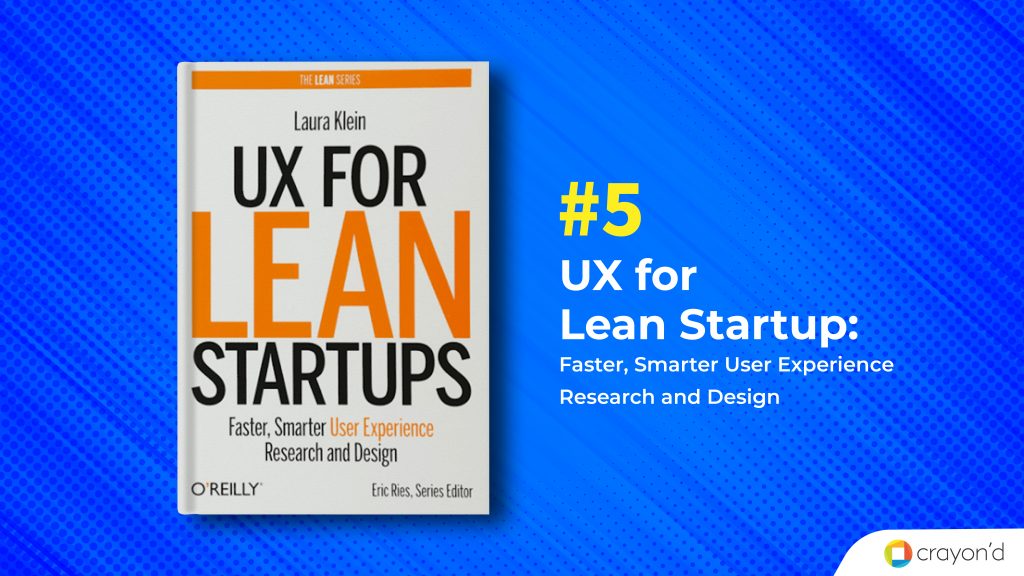
The first chapter clearly explains how the UX fits into an agile startup environment. The book is divided into three parts— validation, design, and product.
The first part deals with the various validation techniques and user research techniques. The author explains what is not validation here by saying,
“Here is the worst possible way for you to try to figure out if your idea solves somebody’s problem: Ask them. The vast majority of entrepreneurs seem to think that explaining their concept in detail to a few people and then asking whether it’s a good idea constitutes validation. It does not.”
Here are some more insights the author provides on how not to ask questions,
“Ask Open-Ended Questions When you start to ask questions, never give the participant a chance to simply answer yes or no. The idea here is to ask questions that start a discussion. These questions are bad for starting a discussion: “Do you think this is cool?” “Was that easy to use?” These questions are much better: “What do you think of this?” “How’d that go?”
The second part speaks about designing for validation and added design hacks and tips. The third part is on measuring product success through UX research. In all these, the core idea is to develop products that are intuitive and easy to use.
At the end of each part, there’s a ‘Go do this now’ chapter, with actionable items. The book also mentions the basic reasons why people skip certain steps and why it is bad for your product. The author makes the narrative interesting through a number of funny stories and examples.
#6-It’s Our Research: Getting Stakeholder Buy-in for User Experience Research Projects
It’s Our Research, is aimed at in-house UX and usability researchers, in any organization where the research process is not completely established. It’s useful for self practitioners too. The author, Tomer Sharon provides great insights into the research process.

Bringing various teams together for UX research is a great way to ensure the creation of user-centered products. But it’s a difficult task to get everyone on the same page. This book states effective tools and techniques to convince and involve stakeholders in the UX research process.
It’s not just persuading the stakeholders that the book teaches, there’s more. There are also methods to collaborate effectively with other teams like design and marketing for conducting UX research.
The book helps you with various processes — identifying stakeholders, planning & executing the research, and communicating the results effectively. The author brings you a number of case studies and interviews explained with UX theories. There’s also a QR code for 20+ videos of the interviews conducted for this book with UX research experts from around the world. The author also states ways to test if your research is impactful among the teams and stakeholders.
The book is filled with colorful illustrations, images, and screenshots to explain the concepts. It’s a perfect guide for UX researchers, be a beginner or an expert.
#7-Validating Product Ideas: Through Lean User Research
Another book by Tomer Sharon, Validating product ideas is aimed at product managers and entrepreneurs. But designers and research enthusiasts can also be benefited from it.
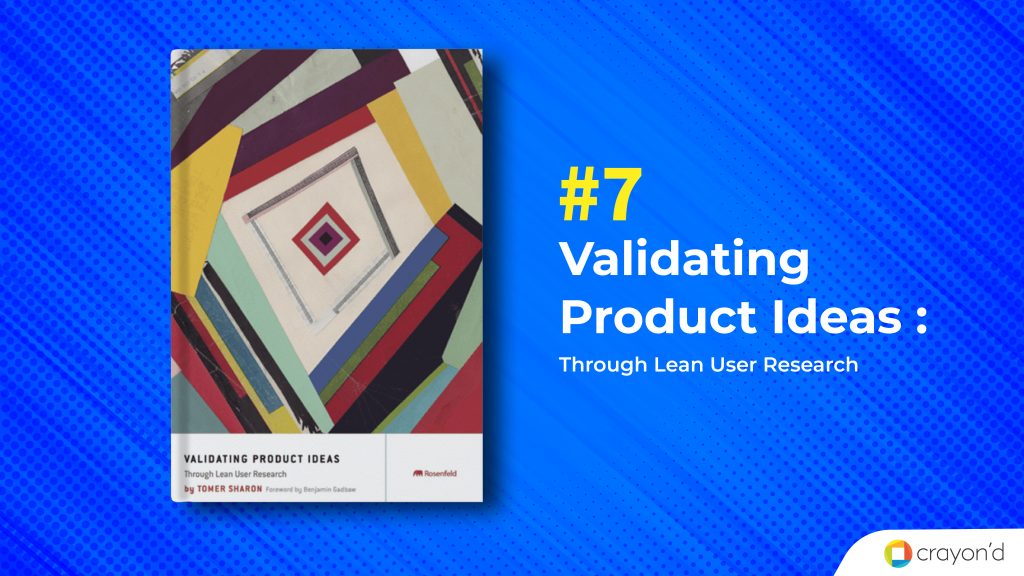
The book, as the author tells, is written based on the interview he had conducted with 200+ startup founders, product managers, and venture capitalists. Each chapter is a question that every product manager/ startup owner needs to ask themselves before plunging into the development part.
The most important thing about user research is finding the right set of people. The effectiveness of the process completely depends on this. And, the author has written an entire chapter dedicated to this topic, where he elaborates on tips and techniques for recruiting apt people.
The book walks you through various methods of doing user research. For example, here’s what he advises about one of the methods— survey,
“…a survey is probably the hardest research technique to do right, and I don’t encourage you to do it. Running a proper survey is a science that requires expertise. It’s very easy to ask very wrong questions in a survey and gather biased, misleading ‘data’.”
It also explains how to make use of this research in the different phases of product development. With attention to detail, the book has provided greater insights to the readers.
It is written such that, you can read it dipping into any chapter at any time making it a great reference book.
Endnote
The UX research process isn’t often obvious to the outside world, but it forms the base of the UX design process.
The ultimate aim of UX is to make the product design empathetic to its users. This brings up a need to stand in their shoes and seek their problems through their eyes. This is where UX research comes into the picture.
So, you need to be conscious of the quality of your UX research process. You need to constantly strive for improvement.
These ux resources help you achieve both. They bring you the wisdom gained through the years of experience from the experts themselves. Do you know what’s more exciting? The fact that you can acquire that knowledge gathered for a number of years, in a matter of a few days or months. All you need to do is sit and flip through the pages.
The above-mentioned list covers books for experience of all ranges— beginner or expert.
No matter wherever you are in the journey, as you finish these books, you will know what it takes to become a better UX researcher and understand the fundamentals of creating a great UI/UX. Isn’t that all you need?







Add comment